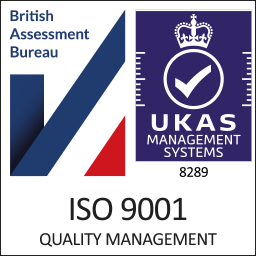In the drive for net zero, the energy efficiency of buildings is now well and truly under scrutiny.

Key new legislation means commercial landlords may be committing an offence, and could be fined up to £150,000 if they continue to let a property with an EPC rating of F or G (subject to exemptions). Owners and occupiers of commercial property need to pay close attention to the new minimum energy efficiency standard (MEES) regulations that came into force at the start of April. In the drive for net zero, the energy efficiency of buildings is now well and truly under scrutiny. The regulations have implications on the commercial property sector for all concerned, landlords, tenants and occupiers, buyers and sellers. Many commercial property owners and occupiers will now need to take steps to ensure that they are compliant. Here are the details of the new regulations and how they impact commercial property. There are practical steps that can be taken but to ignore the regulations could prove to be costly.
MEES regulations: commercial properties
Landlords taking practical and proactive steps in light of energy efficiency rules
The MEES regulations are likely to have significant consequences when buying, selling, letting or undertaking major works to commercial property. Understanding the impact of the amended regulations is important for owners,
occupiers, buyers and sellers. This note deals with the MEES regulations which came into force on 1 April 2023 and some practical approaches on how to deal with the regulations.
What is an energy performance certificate (EPC)?
An EPC is a certificate which shows energy efficiency information about a property. The asset rating (which ranges from A to G) is a measure of the theoretical energy performance based on various factors e.g. construction, heating services and use of the property. An EPC will be valid for 10 years from registration on the EPC register. Recommendations for cost-effective improvements to increase the energy efficiency of a property are included on the EPC.
When is an EPC relevant?
An EPC may be required where:
- an existing property is being sold, leased or assigned
- a new property is built
- a property has had alterations carried out
- a property is subject to a Green Deal plan
- work has been done to improve the EPC rating
- a landlord wishes to continue to let property that already has a non-compliant EPC
Changes to the regulations from 1 April 2023
From 1 April 2023, landlord’s will be committing an offence if they continue to let a commercial property with an EPC rating of F or G unless an exemption applies.
Exemptions
- The EPC rating is already E or above
- All relevant energy efficiency improvements have been carried out, or there are no relevant energy efficiency improvements that can be made and the property remains sub-standard
- Consent – has not been provided by a third party e.g. tenant to enable the landlord to carry out the required works or unreasonable conditions have been imposed
- 7 year payback – where a landlord can show cost of purchasing and installing a recommended improvement does not meet the test. The test is: is the expected value of savings on energy bills the improvement is expected to achieve over a period of 7 years, starting with the date of installation, more than the cost of repaying it?
- Devaluation – an independent surveyor produces a report confirming the improvements would result in market value reduction of at least 5%
- New landlord – a landlord must be landlord for at least 6 months
Exemptions must be registered on the Private Rented Sector (PRS) Exemptions Register with documentary evidence to avoid enforcement action.
When is an EPC not required?
You don’t need an EPC if you can demonstrate the building is:
- listed or officially protected and the minimum energy performance requirements would unacceptably alter the character or appearance
- a temporary building intended to be used for 2 years or less
- a place of worship or for other religious activities
- industrial sites, workshops or non-residential agricultural buildings with low energy demand
- a detached building with a total floor space under 50 square metres
- due to be demolished by the seller or landlord and planning and conservation consents have been granted
- a property which uses no energy to condition the indoor climate (e.g. there is no heating, ventilation or air conditioning equipment). Hot water systems and lighting systems do not qualify as conditioning the indoor climate
Penalties
The penalty for renting out a commercial property in breach of the MEES Regulations for a period of:
a) fewer than three months: 10% of the property’s rateable value, subject to a minimum penalty of £5,000 and a maximum of £50,000 and publication of non-compliance.
b) more than three months: 20% of the rateable value, with a minimum penalty of £10,000 and a maximum of £150,000 and publication of non-compliance.
Financial penalties of a maximum of £5,000 and a publication penalty are also given if false or misleading information is given on the PRS register.
Who enforces EPCs?
The local weights and measures authorities are responsible for enforcing the MEES Regulations and imposing penalties.
Future proposals
The government proposes that all commercial properties by 1 April 2027, must have an EPC rating of at least C and by 1 April 2030 at least a B rating.
Practical steps
Compliance with MEES could have a significant impact on landlords with older buildings and large portfolios. Many landlords are carrying out a review of the EPC status for each of their properties and planning for any likely trigger dates that may trigger current or future works to ensure compliance with the regulations.
If you require any legal or practical advice regarding MEES Regulations or require assistance updating your portfolio of leases to include compliance and financial responsibility with MEES, please contact our Commercial Property team.
Written by Natalie Parsons.
You may also like

Landlords be aware – 10% uplift in damages can apply to breach of repairing covenant
The Court of Appeal has held that the 10% uplift in the Legal Aid, Sentencing and Punishment of Offenders Act...

Arbitration process for commercial landlords and tenants nearly with us
As at late February 2022, The Commercial Rent (Coronavirus) Bill is nearing completion. It has passed through the House of...

Commercial Rent (Coronavirus) Act 2022 – An Update
The Commercial Rent (Coronavirus) Act 2022 came into force on 24 March 2022, introducing a new arbitration scheme to assess...





